I stood on the rocky hilltop, looking out over Spain’s Huesca province, and I could almost see banners waving and knights making their way up to Loarre Castle. Visiting Loarre Castle let me step into a real piece of history—this is one of the best-preserved Romanesque castles in all of Europe.
Builders started work back in the 11th century, and these ancient stone walls and towers have survived for centuries. It’s easy to picture royal life and epic battles echoing through the past.
There’s something magical about wandering these old courtyards and narrow passageways, knowing kings and knights once walked here. The views from the fortress, sweeping across the Aragon countryside, really do feel storybook-perfect.

Exploring Loarre Castle let me get up close to European history while having a real adventure. If you want more than a quick photo, this Romanesque castle offers both captivating history and scenery you won’t forget.
Loarre Castle: Stepping Into History
Walking inside Loarre Castle in Spain felt like slipping through time. The ancient stones, sweeping views, and quiet air made me slow down and really notice the centuries of history tucked into every corner.
Origins and Romanesque Architecture
Builders started Loarre Castle in the 11th century, choosing a rocky hill high in Huesca province, Aragon. King Sancho III of Navarre picked the spot, turning it into an important fortress at the edge of his lands.
As I walked the walls, I noticed thick stone arches and tiny windows—classic Romanesque details. The rounded towers and sturdy chapel blend military strength with religious life.
The builders reused some old Roman walls and tackled the project in sections, which must have needed a lot of patience and careful planning. Many people call Loarre Castle one of Europe’s best-preserved Romanesque castles, and honestly, every brick seems to have a story.
Legends and Famous Visitors
Stories echo through the halls of Loarre Castle. Locals say the ghosts of knights and kings wander here at night. There are tales of hidden treasures and secret passages for escaping during attacks.
Famous visitors have left their mark, too. Movies like “Kingdom of Heaven” filmed scenes here, and historians come from all over to study these walls. Local guides love to share stories, which adds a little magic to every visit.
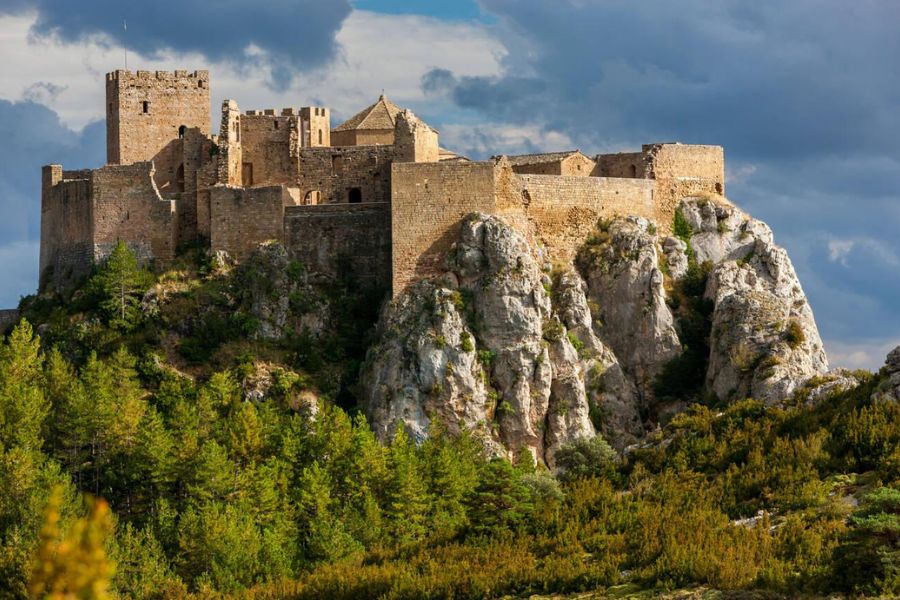
Sometimes I imagine what life was like for the monks and soldiers who lived here, waiting for news of battles or maybe a royal visit. Their days must have been a mix of long quiet stretches and sudden bursts of excitement.
Feeling Like Royalty or a Knight: The Castle Experience
Tourism at Loarre Castle keeps growing, but it still feels peaceful when you walk the grounds. The castle’s towers, courtyards, and chapel make it easy to picture yourself as a knight defending the frontier or royalty watching over the land.
A few tips made my visit better:
- Wear comfy shoes: There are steps, cobbles, and plenty of uneven stone floors.
- Bring some patience: Visitors stop for photos, so going slow helps everyone enjoy the place.
- Take in the view: The scenery is stunning, with fields and mountains rolling out for miles.
When the wind whistles through the old stones, I feel oddly connected to the past. Loarre Castle’s blend of stories, legends, and wild beauty creates a place where anyone can feel briefly royal.
Exploring the Castle and Its Surroundings
Walking into Loarre Castle felt like entering a storybook—ancient walls, breathtaking views, and wild countryside all around. There are cool rooms inside, wide grounds outside, and hiking trails filled with wildlife just beyond.
Must-See Highlights Inside Loarre Castle
The Romanesque entrance caught my eye first, with its detailed stone carvings. Inside, the King’s keep rises high, showing how royals and knights once defended this place.
Some staircases are narrow and winding, so every step feels like an adventure.
The chapel is peaceful, with beautiful arches and sunlight streaming in. The old royal apartments hint at the lives of people who called this place home centuries ago.
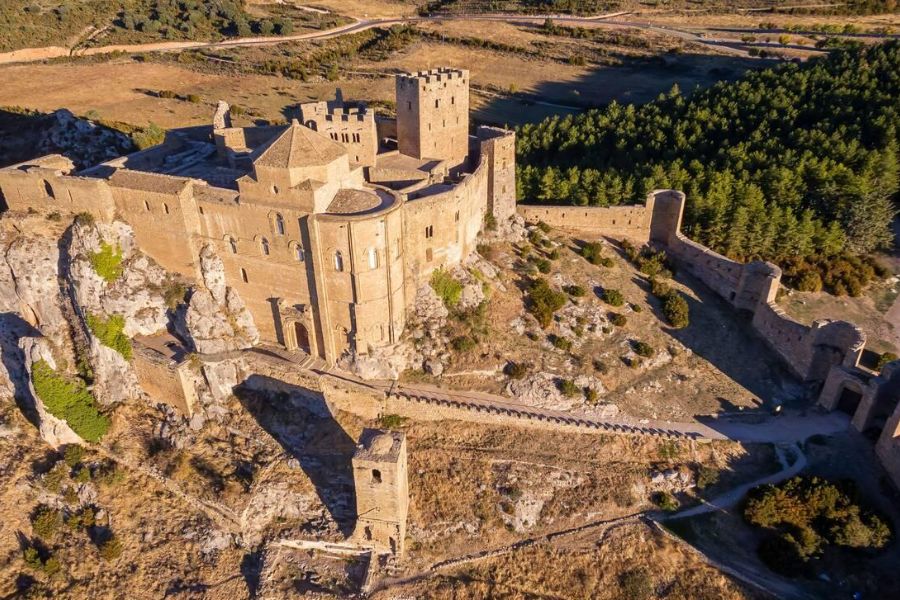
I found the outer defensive walls especially fascinating. You can climb the towers for even better views across the landscape. A few corridors and rooms still echo with scenes from the movie “Kingdom of Heaven.”
Quick highlights:
| Feature | Why Visit |
|---|---|
| King’s Keep | Stunning views, history of royalty and defense |
| Chapel | Lovely Romanesque arches and peaceful setting |
| Defensive Walls | Panoramic views and a sense of medieval strength |
The Castle Grounds and Panoramic Views
Outside, the castle grounds feel just as exciting as the rooms inside. Ancient stones give way to grass, wildflowers, and the jagged edge of the Spanish Pyrenees in the distance.
Every time I stepped through an arched gate, the landscape seemed to open up even wider.
From the castle’s hilltop perch, the views stretch for miles. Some spots are perfect for a picnic, surrounded by fresh mountain air.
I could see tiny villages below and rolling hills beyond, with birds of prey gliding overhead. The setting makes it easy to picture knights and nobles watching for travelers long ago.
Photographers will love how the light changes at sunrise and sunset. I recommend visiting at different times—each trip brings new colors and sights.
Hiking and Wildlife Near Loarre
Just outside the walls, well-marked hiking trails wind through the foothills. This corner of Aragón is wild, offering everything from easy family walks to tough hikes.
Some trails head toward the Sierra de Loarre, leading into pine forests, rocky slopes, and blooming groves.
While I walked these paths, I spotted rabbits, wild birds, and even mountain goats. Birdwatchers should bring binoculars—eagles and vultures often soar overhead.
Loarre isn’t in a national park, but it’s close to larger nature areas, including routes toward the Val d’Aran and the wilder stretches of the Spanish Pyrenees.

A short drive brings you to great nature spots for a day trip. Stretching my legs in these hills made the castle visit feel like a real journey into medieval Spain and its wild side.
Travel Tips: Getting to Loarre Castle
Getting to Loarre Castle takes a bit of planning, but honestly, the trip is worth every minute. Whether I started from busy cities or quiet mountain roads, the journey always brought new scenery and a sense of adventure.
Transport Links from Pamplona and Navarra
If you’re coming from Pamplona or anywhere in Navarra, driving is the most direct way. The drive is about 120 kilometers and usually takes around 1 hour and 30 minutes.
I take the A-21 toward Huesca, then follow signs for Ayerbe and finally Loarre.
I like to stop in small towns along the way for coffee or a quick snack. If you can’t drive, trains run from Pamplona to Huesca, but they aren’t super frequent.
It’s smart to check RENFE for the latest train schedules before you go.
Once in Huesca, I usually switch to a local taxi or arrange a ride since there aren’t direct buses to Loarre Castle from Navarra. Tourist offices in Pamplona and Huesca have English-speaking staff and can help with up-to-date transport info if you need it.
Access from the Basque Country and Pyrenees
If you’re traveling from the Basque Country or the Pyrenees, most routes also lead to Huesca before heading out to Loarre.
Starting from San Sebastián, Bilbao, or Vitoria-Gasteiz, you can catch trains and buses to Huesca, though the ride takes several hours.
Driving gives you more flexibility, especially since Pyrenees roads can be winding and slow. It’s about a 3-hour drive from San Sebastián and usually less from other Basque towns.
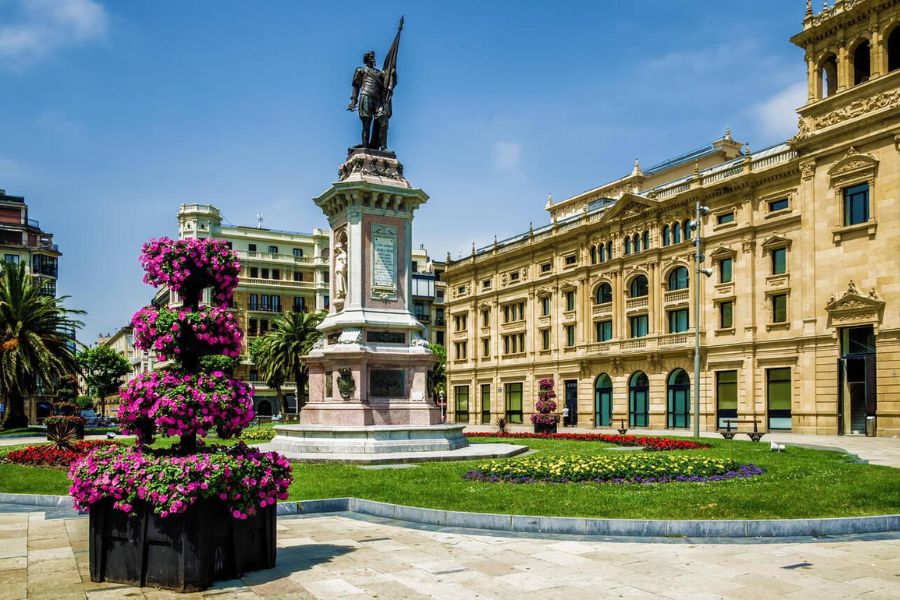
The A-15 and A-21 motorways are your best bet, leading into Aragón with some surprisingly great mountain views.
Along the way, I spot signs for the Camino de Santiago, which passes nearby. I recommend checking local tourist info for any events or roadwork that might slow you down, especially in summer.
Using Bus Services and Public Transport
If you prefer public transport, getting to Loarre Castle fully by bus takes some planning. From Huesca, local buses run to Ayerbe, a small town about 11 km from the castle.
Bus company schedules change sometimes, so double-checking times on the official website has saved me headaches.
From Ayerbe, there’s no regular public bus to Loarre Castle itself. I’ve either walked (it’s a long uphill trek) or grabbed a taxi for the last stretch.
Bring water, since food and drink options get scarce as you leave town.
I like to pick up printed bus timetables and ask at the tourist office, especially if I need to get back to Huesca later. Here’s a quick overview:
| Step | Transport Option | Notes |
|---|---|---|
| Huesca to Ayerbe | Local bus | Check current schedules; approx. 35 mins |
| Ayerbe to Loarre | Taxi or on foot | 11 km; plan ahead for return transport |
When I travel by public transport, I leave extra time for transfers—better safe than sorry.
Local Culture, Events, and Experiences
Outside the ancient walls of Loarre Castle, I found a world buzzing with Spanish traditions, colorful festivals, and late-night adventures. From wild fiestas in Huesca to the rhythms of Valencia and even a side trip to Andorra, this part of Spain feels full of life.
Festivals and Fiestas Near Loarre
When I visited Loarre and the Huesca region, it seemed like every season brought a new festival or fiesta. Fiesta de San Lorenzo is a highlight every August in Huesca.
Locals dress in green and white, music fills the city, and parades celebrate the region’s patron saint.
In the smaller villages near the castle, I stumbled into traditional dances, folk music, and tasty street food stalls during summer fiestas. The smell of grilled meat mixed with laughter and local bands.
These gatherings felt open and welcoming, so it was easy for visitors like me to join in.

While the world-famous Running of the Bulls happens in Pamplona, not far from Loarre, some small villages hold their own, much less crowded versions during local fiestas. If you want a real taste of northern Spanish tradition, try to time your trip with one of these festivals.
Nightlife and Traditional Spanish Experiences
After sunset, I quickly realized Spanish nightlife isn’t just for big cities. Bars and taverns in towns near Loarre Castle stay lively late into the night, filled with locals sharing tapas and stories.
I tried local wines and classic Aragonese dishes—roast lamb and spicy chorizo were favorites.
Flamenco isn’t as common here as in the south, but weekends sometimes bring live folk music and dancing.
I once joined a small crowd for a jota performance—fast rhythms, swirling skirts, and castanets. The sense of community was strong.
Evenings here are less about clubs and more about connecting with people in cozy, historic spots.
If you go, plan at least one relaxed night at a local tavern. That’s where stories flow as easily as the wine, and you’ll get a real taste of the region’s warmth.
Valencia, Andorra, and Regional Attractions
When I ventured a bit farther from Loarre, I hopped on a train and ended up at Valencia’s beaches. The futuristic City of Arts and Sciences stood out, and honestly, the whole city buzzes with energy.
Valencia really comes alive in March. Las Fallas takes over, and the parades and fireworks are just wild.
Heading north, I decided to squeeze in a day trip to Andorra. It’s tucked away in the Pyrenees, and the vibe there is totally different. Hikers and shoppers both seem to love it.
I spent a lazy afternoon wandering through mountain villages and hunting for duty-free souvenirs. Not a bad way to pass the time.
Here’s a quick comparison for anyone thinking about side trips:
| Destination | Distance from Loarre | Highlight |
|---|---|---|
| Valencia | ~4 hours by car | Las Fallas Festival, beaches, arts scene |
| Andorra | ~3.5 hours by car | Mountain nature, shopping, spas |
Mixing castle history with festivals and city life made my journey feel anything but ordinary.
Where to Stay and Practical Information
When I visited Loarre Castle, I didn’t have much trouble finding a comfortable place to stay. The area offers unique local stays, and there’s solid tourist support.
If you want a break from castles, you’ll even find places to relax by the water.
Accommodation Options in the Region
Staying near Loarre Castle gives you a taste of history and a bit of small-town warmth. In Loarre village, I came across several guesthouses and family-run casas rurales.
These cozy inns usually serve homemade breakfasts and share tips on castle visits.
Here’s a quick list of places I liked:
- Casa Rural La Posada de Loarre: A short walk from the castle. The rooms look out over the hills, and the staff made me feel right at home.
- Hotel Pedro I de Aragón (Huesca): If you want something more modern, this hotel sits about 30 minutes away in Huesca. Bigger rooms, good food, and more city comforts.
- Rural Apartments: Ayerbe, just a 10-minute drive, has several apartment options.
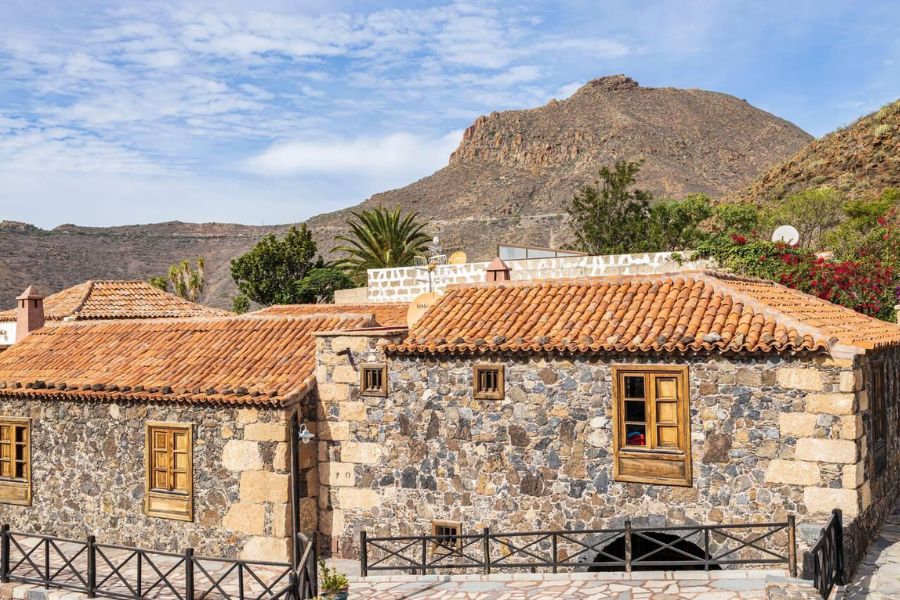
If camping’s more your thing, you’ll find campsites with mountain views nearby.
Nearby Beaches and Relaxation Getaways
Loarre Castle sits inland, surrounded by rocky hills. Still, the region surprised me with its relaxing escapes close by.
I’d say definitely check out the Embalse de La Sotonera Lake, which is only about 20 minutes away by car. The lake has small beaches—great for swimming, kayaking, or just chilling out by the shore.
Here’s a quick table for day-trip ideas:
| Place | Distance from Loarre | Activities |
|---|---|---|
| La Sotonera Lake | 20 min drive | Swimming, picnics, kayaking |
| Huesca Piscinas | 30 min drive | Public pools, sunbathing |
| Alquézar | 1 hr drive | River walks, canyoning |
After a morning at the castle, I loved unwinding by the lake with a picnic.
Support, Tourism Services, and Managing Inconvenience
Loarre Castle really takes care of its visitors. When I arrived, I spotted an information desk right at the entrance. The staff spoke English and genuinely wanted to help.
They offered guided tours, maps, and a rundown of upcoming events. I paid for my ticket by card, so that was a relief—no scrambling for cash.
Parking? It’s free and sits right next to the castle. If you have mobility issues, just ask the staff; they’ll point out the easiest routes, though some paths do get pretty steep.
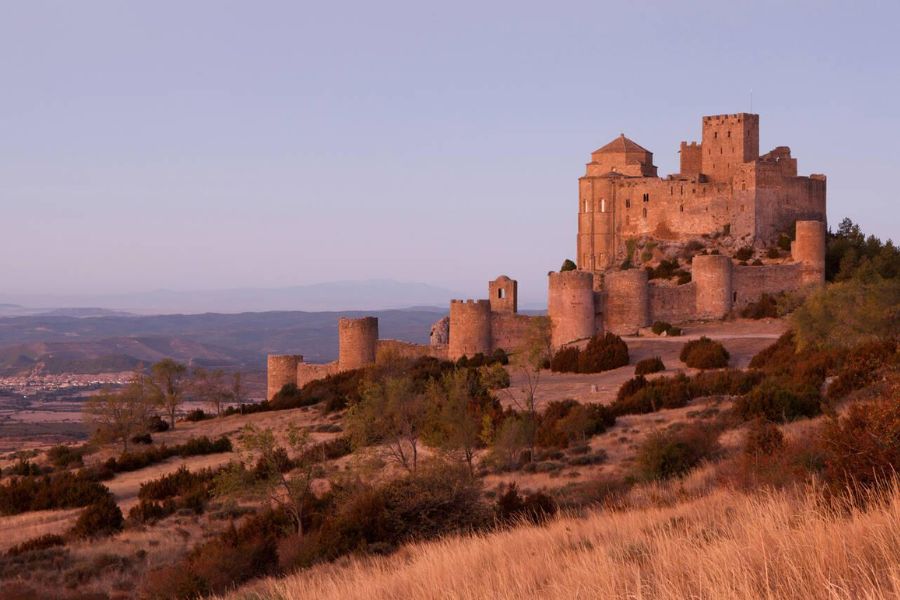
The restrooms were impressively clean. I didn’t expect that, honestly.
If you forget something, the nearby towns like Ayerbe have small shops and pharmacies. I found the tourism office in Huesca useful for checking bus times and grabbing info on extra tours.
All this support made my visit feel easy, even when things didn’t go exactly as planned.

